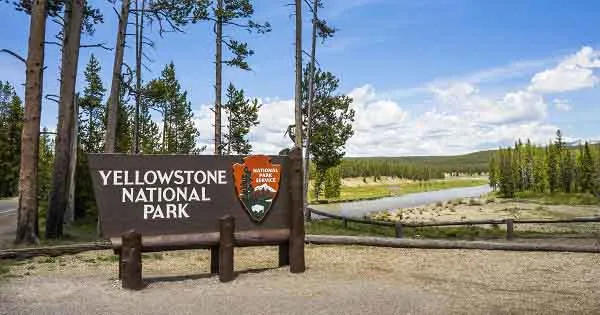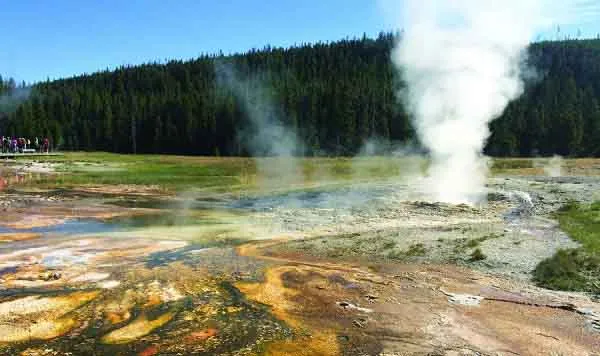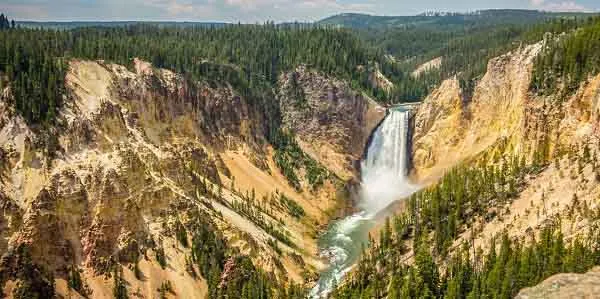Wyoming, renowned for the pristine beauty of Yellowstone National Park, is not only a land of natural wonders but also an invaluable archaeological treasure trove, preserving traces of history spanning thousands of years. From ancient Native American sites to prehistoric ecosystem discoveries, Wyoming offers a diverse and rich tapestry of the past. This article will guide you through the most significant archaeological sites in Wyoming, unveiling the stories hidden beneath layers of rock and inviting history, culture, and archaeology enthusiasts to this extraordinary land.
Yellowstone, Wyoming’s jewel, has long been celebrated for its majestic beauty and biodiversity, yet few are aware of its rich archaeological history stretching back millennia. Archaeologists have found evidence of human presence in Yellowstone dating back approximately 11,000 years, when the first Native Americans arrived in this region after the last ice age. The shores of Yellowstone Lake and surrounding areas have become repositories of ancient fossils and artifacts, testament to a long and enigmatic past.

Yellowstone – Cradle of Wyoming’s Archaeological History
Established in 1872, Yellowstone National Park is not only the first national park in the United States but also one of the earliest areas surveyed and studied archaeologically. As early as the beginning of the 20th century, archaeologists began to uncover important sites, revealing insights into the lives and cultures of ancient indigenous inhabitants.
Early Discoveries: Explorer John Colter, the first to discover Yellowstone in the early 19th century, likely did not realize the profound historical secrets hidden within this land he encountered. Following Colter, numerous expeditions and studies were conducted, focusing not only on the natural beauty but also on understanding the human history of Yellowstone. Archaeologists have unearthed stone tools, pottery, and traces of ancient settlements, proving that humans have lived and been active in Yellowstone for thousands of years.
Archaeological Sites Along Yellowstone Lake: The shores of Yellowstone Lake are particularly significant in the field of archaeology. Research has indicated that this area concentrates many sites dating from the Paleo-Indian period (approximately 11,000 – 8,000 years ago) to recent historical times. Fossils and artifacts found here not only enhance our understanding of human history but also provide valuable information about Yellowstone’s environment and ecosystem in the past.
Value of Geysers and Geothermal Areas: The geysers and geothermal areas in Yellowstone are not only unique natural landscapes but also archaeologically significant. The high temperatures from hot springs can preserve organic artifacts such as wood, bone, and plants for extended periods. This creates favorable conditions for studying and reconstructing the living environments and cultures of ancient peoples.

Other Prominent Archaeological Sites in Wyoming
Beyond Yellowstone, Wyoming boasts numerous other significant archaeological sites, each with its own unique story and value.
Agate Fossil Beds National Monument: Located in eastern Wyoming, Agate Fossil Beds is a national monument renowned for its exceptionally rich and diverse collection of Oligocene mammal fossils (approximately 34-23 million years ago). Archaeologists have discovered thousands of fossils of prehistoric animals such as shovel-tusked elephants, woolly rhinoceroses, and bear dogs. This site is not only important paleontologically but also archaeologically, as researchers have found evidence of ancient Native Americans using the area for hunting and gathering stone materials.
Medicine Wheel National Historic Landmark: Situated atop the Bighorn Mountains, Medicine Wheel is a mysterious stone structure dating back approximately 300-700 years. This structure comprises a large stone circle with 28 stone spokes radiating from the center, forming a wheel shape. The meaning and purpose of the Medicine Wheel remain enigmatic, but many researchers believe it is related to Native American religious and astronomical practices. This site is not only an important archaeological landmark but also a sacred site for many Native American tribes today.
Fort Laramie National Historic Site: Although primarily known for its role as a crucial military outpost in the 19th century, Fort Laramie also holds archaeological value. This area was once a site of trade and encounter between Native Americans and European Americans from the early 19th century. Archaeological excavations at Fort Laramie have uncovered numerous artifacts related to the daily lives of soldiers, traders, and Native Americans, providing deep insights into the history of cultural exchange and conflict during the westward expansion of the United States.
Significance of Wyoming’s Archaeological Sites
Archaeological sites in Wyoming are not only fascinating tourist destinations but also of immense significance for studying and understanding human history and Earth’s past.
Understanding Native American History: Archaeological sites in Wyoming, particularly Yellowstone and Medicine Wheel, provide invaluable evidence of Native American history and culture. We can learn about how they lived, hunted, cultivated, and practiced religious rituals over thousands of years. These discoveries help us appreciate and preserve the rich cultural heritage of indigenous peoples.
Researching Prehistoric Ecosystems: Fossil sites like Agate Fossil Beds open a window into the prehistoric animal world and ancient ecosystems. We can study the evolution, extinction, and relationships between animal species in the past. This information not only helps us better understand natural history but can also provide valuable lessons for biodiversity conservation today.
Exploring the Human-Environment Relationship: Archaeological sites in Wyoming demonstrate the close relationship between humans and the natural environment throughout history. From adapting to the harsh environment of high mountains to utilizing abundant natural resources, ancient peoples left profound marks on the land of Wyoming. Archaeological research helps us better understand this interaction and draw lessons for sustainable development in the future.

Archaeological Tourism in Wyoming – Experiences and Considerations
Wyoming is not only an ideal destination for nature lovers but also a paradise for archaeology enthusiasts. Visitors can explore archaeological sites, museums, and information centers to delve deeper into the history and culture of this region.
Visiting Archaeological Sites: Many archaeological sites in Wyoming are open to tourists, such as Agate Fossil Beds National Monument, Medicine Wheel National Historic Landmark, and Fort Laramie National Historic Site. Visitors can join guided tours, hike trails, and explore on-site exhibits.
Museums and Information Centers: Museums and information centers in Wyoming, especially in areas near archaeological sites, offer more detailed and in-depth information about the history and archaeology of the region. The Yellowstone Heritage and Research Center and the Wyoming State Museum are excellent places to learn more about Wyoming’s archaeological heritage.
Considerations for Visitors: When visiting archaeological sites, visitors should adhere to the regulations and guidelines of the management. It is crucial to respect historical sites, not remove any artifacts, and avoid impacting the surrounding natural environment. Archaeological tourism is not only about exploring the past but also about the responsibility to preserve heritage for the future.
Conclusion
Wyoming, with its significant archaeological sites spanning from Yellowstone National Park to fossil beds and other historical landmarks, is a land rich in history and culture. Exploring these sites not only provides a unique travel experience but also helps us deeply understand human and Earth’s past. Come to Wyoming, not only to admire the magnificent natural beauty but also to discover captivating archaeological stories, and feel the connection between the past, present, and future in this wondrous land.